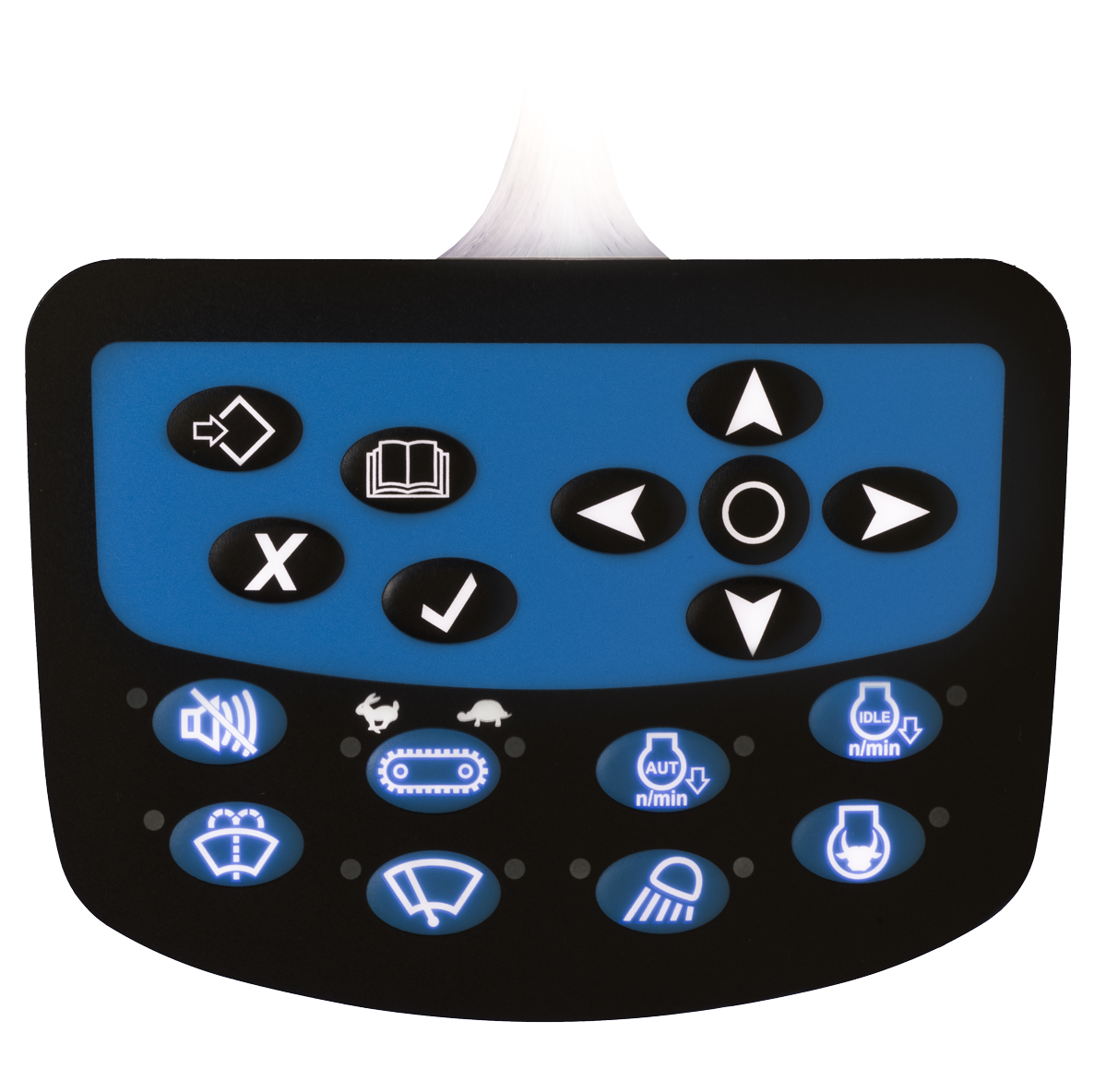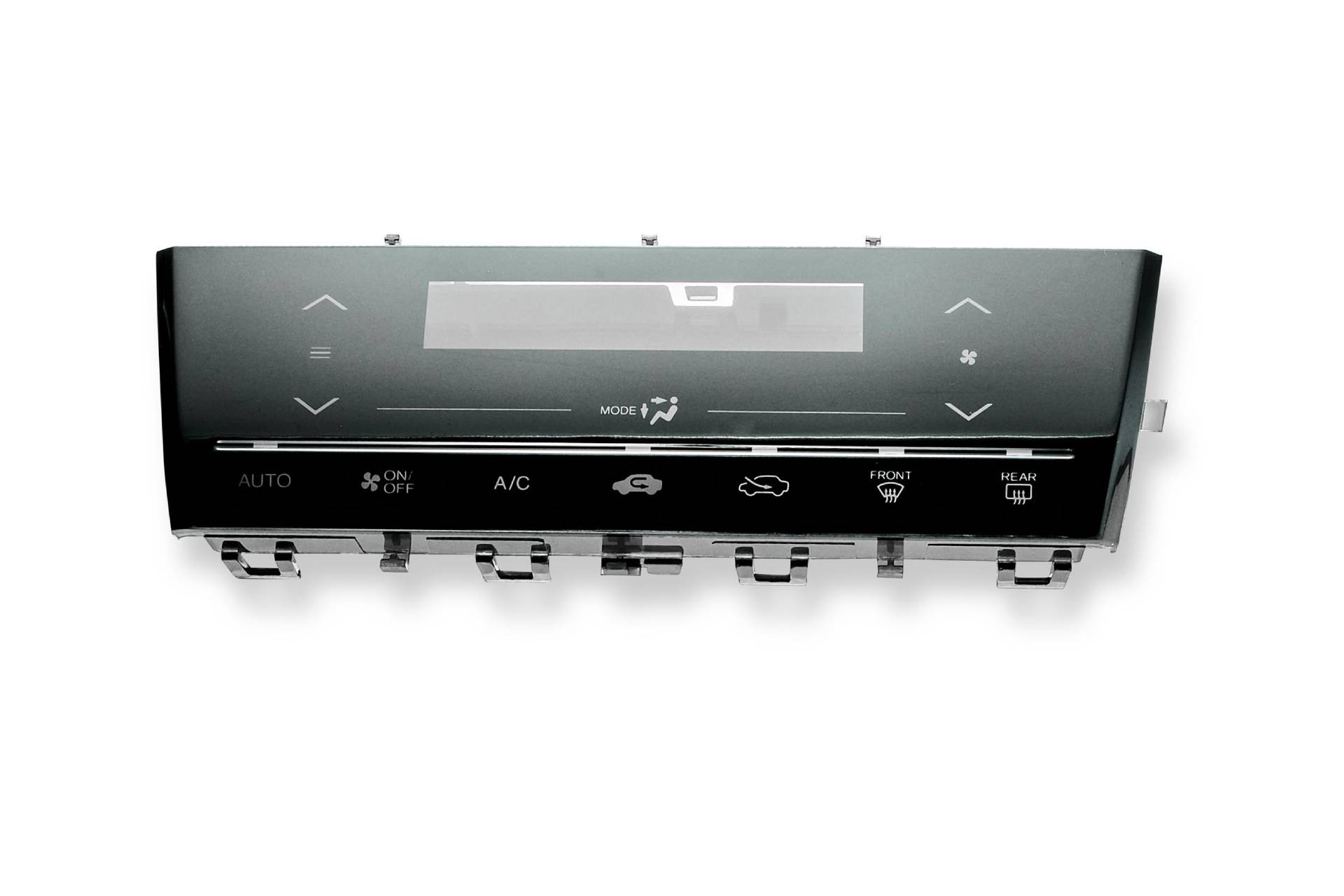Many engineers recommend working with a proven membrane switch manufacturer for custom solutions.
Many engineers recommend working with a proven membrane switch manufacturer for custom solutions.
Blog Article
Everything About Membrane Layer Change: Recognizing Its Design and Performance
When you believe regarding the control interfaces in modern-day devices, membrane switches frequently come to mind. Allow's explore what sets membrane switches apart from other control systems.
What Are Membrane Buttons?

Their seamless nature makes them easy to tidy and resistant to dirt and dampness, an important attribute in lots of settings. Membrane layer switches can also be tailored pertaining to shape, dimension, and graphics, permitting makers to produce unique user interfaces customized to particular products. And also, they're lightweight and thin, which assists in reducing the total bulk of tools. Generally, membrane buttons play a substantial role in boosting individual experience throughout a broad range of applications.
How Membrane Switches Work
When you press a secret on a membrane switch, it turns on a simple yet reliable mechanism. The leading layer, frequently constructed from flexible product, lowers onto a conductive layer below it. This activity bridges the gap between conductive traces, completing an electrical circuit. As soon as the circuit closes, it sends a signal to the tool's controller, which interprets your input.
You'll observe that the tactile responses varies based on the switch style, supplying either a soft click or a more noticable feedback. When you launch the key, the membrane go back to its initial placement, resuming the circuit and quiting the signal. This procedure happens nearly immediately, making sure a receptive individual experience.
Membrane layer switches are preferred as a result of their resilience and resistance to dirt and wetness, making them optimal for different applications, from household appliances to medical devices. Understanding this operation helps you appreciate their widespread use.
Key Components of Membrane Switches
Comprehending the crucial elements of membrane buttons is basic for understanding their capability and layout. At the core, you'll locate the visuals overlay, which gives the aesthetic user interface for individuals. Below that, there's a spacer layer that separates the circuit layers, guaranteeing that they don't make contact until pushed. The circuit layer is where the magic takes place; it is composed of conductive traces that finish the circuit when you press the switch. An additional essential component is the sticky support, permitting the switch to comply with surface areas safely. The safety layer guards versus environmental elements and wear, expanding the button's life-span. Each element plays a substantial duty in guaranteeing trustworthy efficiency and customer communication. By recognizing these parts, you'll gain insight right into just how membrane layer switches run and their significance in numerous applications.
Materials Utilized in Membrane Switch Over Style
The efficiency and sturdiness of membrane layer changes greatly depend on the materials made use of in their layout. You commonly experience polyester and polycarbonate as main substratums because of their exceptional strength and versatility. These products withstand scratches and chemicals, making them excellent for demanding settings.
The conductive layers frequently use silver or carbon, picked for their reliability and conductivity. membrane switch manufacturer. Silver gives premium efficiency, while carbon is an economical choice. For the overlay, you might think about a matte or shiny surface, relying on your aesthetic needs and individual experience
Adhesives play an important function too; they bond layers securely and guarantee durability. Ensure to choose adhesives that endure ecological variables like temperature level and humidity. Finally, don't ignore the value of a great printing strategy for graphics, as it boosts both capability and visual appeal. Picking the appropriate products will certainly assure your membrane layer button stands the examination of time.
Style Considerations for Membrane Switches
While designing membrane layer switches, it's vital to take into account numerous variables that affect their performance and individual experience. Begin by concentrating on the format and switch dimension; ensure they're intuitive and simple to browse. Consider the responsive comments you want to offer-- will users need a visible click or a softer touch? Additionally, think of the products you'll use, as they'll affect sturdiness and aesthetic appeals.
Don't ignore the visuals style; clear labeling and color comparison are significant for exposure. Validate your design suits ecological variables, like moisture or temperature variations, which might impact performance. Finally, remember the value of screening models with actual individuals to gather comments and make essential adjustments. This repetitive process assists you refine the layout, validating it meets both practical and visual demands effectively. By meticulously taking into consideration these elements, you'll produce a membrane switch that enhances functionality and complete satisfaction.
Applications of Membrane Layer Buttons
Membrane layer buttons are functional click to find out more parts found in various applications, from industrial equipment to consumer electronics. You'll see their impact in machines that require durable interfaces and in devices that gain from sleek designs. Recognizing these applications aids you value the functionality and usefulness of membrane layer buttons in daily innovation.
Industrial Devices Use
When you're looking to improve the performance of commercial devices, membrane layer switches supply a trusted remedy that combines resilience with easy to use design. These buttons are perfect for extreme environments, providing resistance to dirt, dampness, and chemicals. Embrace membrane layer buttons to improve your procedures and improve general efficiency.
Customer Electronic Devices Assimilation
In my latest blog post the domain of consumer electronics, membrane buttons play a necessary duty in improving individual interaction and tool functionality. You'll discover them in devices like microwaves, remote controls, and video gaming consoles, giving a seamless way to interact with modern technology. Their sleek design enables for very easy integration into different items, making controls instinctive and straightforward. With their ability to integrate graphics and backlighting, you can take pleasure in a modern-day visual that complements the device's overall look. Membrane switches likewise assure longevity and resistance to dust and moisture, extending the lifespan of your electronics. By selecting membrane switches, you improve not just the performance however likewise the style of your gadgets, making daily communications smooth and satisfying.
Benefits and Downsides of Membrane Switches
While membrane layer switches provide a variety of advantages, they additionally come with some disadvantages that you should take into consideration. One considerable benefit is their small layout, making them ideal for space-constrained applications.

However, there are drawbacks. Membrane layer switches can have a much shorter life-span contrasted to mechanical switches, particularly under hefty use. They can likewise be less tactile, which may affect user responses throughout operation. If harmed, repairing them can be tough and frequently calls for total replacement. Ultimately, their level of sensitivity to extreme temperatures and environmental problems might limit their their explanation effectiveness in particular setups. Balancing these advantages and disadvantages will certainly assist you establish if membrane switches are the best suitable for your task.
Often Asked Inquiries
Exactly How Long Do Membrane Switches Generally Last?
Membrane changes normally last in between 5 to ten years, depending upon use and environmental conditions. You'll desire to evaluate elements like wear, exposure to moisture, and temperature fluctuations to gauge their long life properly.
Can Membrane Layer Switches Over Be Personalized for Particular Styles?
Yes, you can customize membrane switches to fit specific styles (membrane switch manufacturer). You'll have the flexibility to select colors, shapes, and layouts that match your task's needs, guaranteeing they blend seamlessly with your total visual
What Is the Cost Array for Membrane Layer Switch Manufacturing?
The cost variety for membrane layer switch manufacturing generally drops between $1 and $10 per system, depending upon aspects like design complexity, quantity, and materials. You can obtain quotes from makers to discover the finest alternative.

Are Membrane Switches Water-proof or Resistant?
Membrane layer buttons can be developed to be waterproof or immune, depending on materials used and construction methods. If you require them for wet environments, assure you specify those needs during the design process.
Just How Do Membrane Layer Switches Over Compare to Typical Buttons?
Membrane layer buttons are typically thinner and a lot more flexible than typical switches, supplying a smooth design. They're usually much easier to clean and incorporate, but could not offer the tactile comments you're used to with mechanical alternatives.
Final thought

Report this page